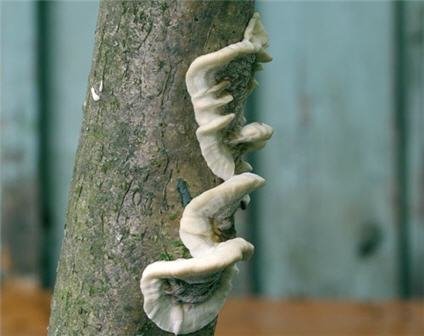Bjerkandera scorched (Bjerkandera adusta)
- Division: Basidiomycota (Basidiomycetes)
- Subdivision: Agaricomycotina (Agaricomycetes)
- Class: Agaricomycetes (Agaricomycetes)
- Subclass: Incertae sedis (of uncertain position)
- Order: Polyporales (Polypore)
- Family: Meruliaceae (Meruliaceae)
- Genus: Bjerkandera (Bjorkander)
- Type: Bjerkandera adusta (Singed Bjerkandera)
Synonyms:
- Trutovik is offended

Bierkandera scorched (lat. Bjerkandera adusta) is a species of fungus belonging to the genus Bjerkandera of the Meruliaceae family. One of the most widespread fungi in the world, causes white rot of wood. Its prevalence is considered one of the indicators of human influence on the natural environment.
fruiting body:
Bjerkander is burnt – an annual “tinder fungus”, the appearance of which changes radically in the process of development. Bjerkandera adusta starts as a white splotch on dead wood, stump or dead wood; very soon the middle of the formation darkens, the edges begin to bend, and the sinter formation turns into rather shapeless, often fused consoles of leathery “hats” 2-5 cm wide and about 0,5 cm thick. The surface is pubescent, felt. Coloration also changes significantly over time; white edges give way to a general gray-brown gamut, which makes the mushroom really look like “scorched”. The flesh is greyish, leathery, tough, becoming “corky” with age and very brittle.
Hymenophore:
Thin, with very small pores; separated from the sterile part by a thin “line”, visible to the naked eye when cut. In young specimens, it has an ashy color, then gradually darkens to almost black.
Spore powder:
Whitish.
Spread:
Bierkandera scorched is found throughout the year, preferring dead hardwoods. Causes white rot.
Similar species:
Considering the mass of forms and age variability of the fungus, it is simply a sin to talk about similar species of Bjerkandera adusta.
Edibility:
not edible









